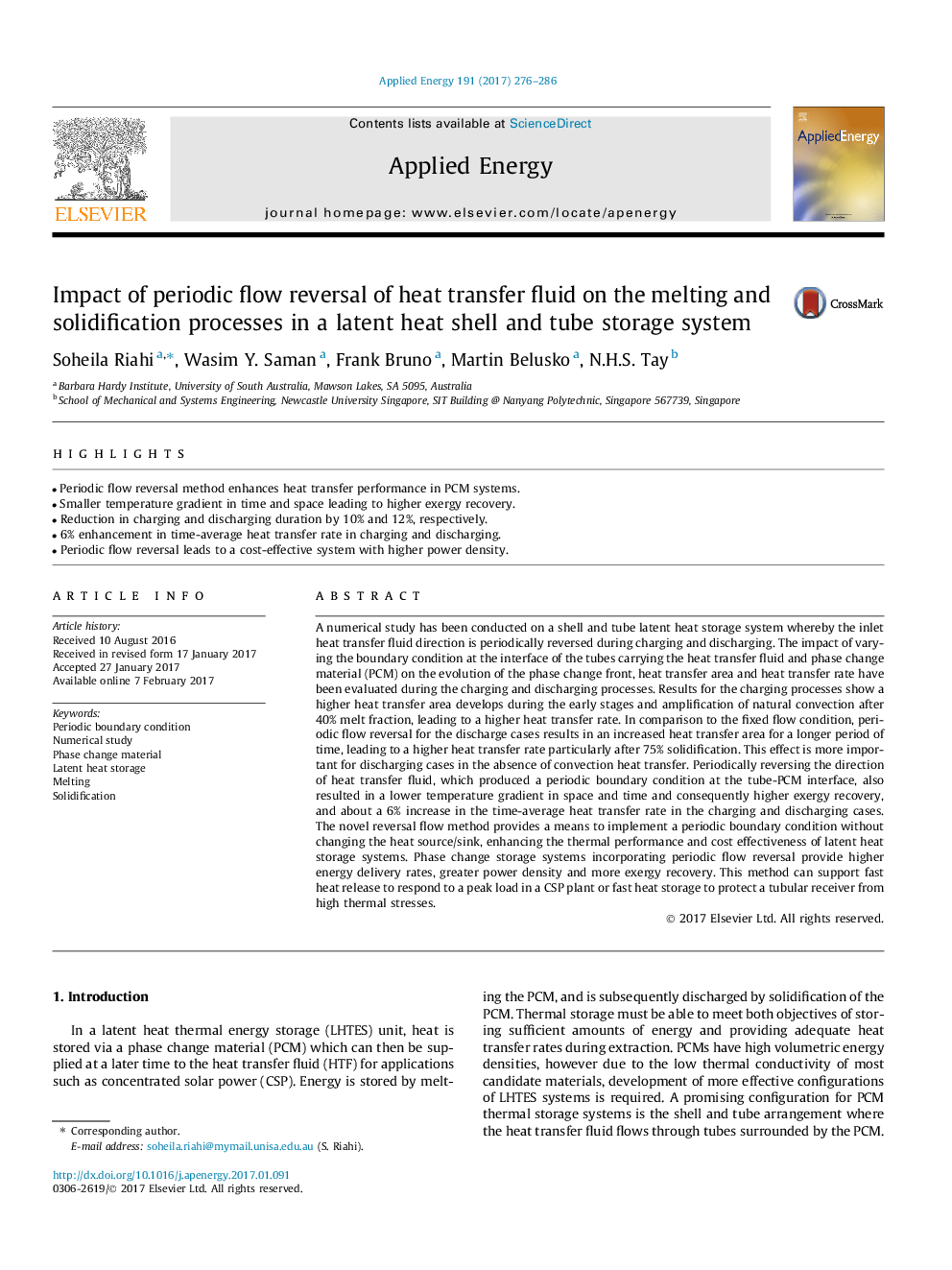| کد مقاله | کد نشریه | سال انتشار | مقاله انگلیسی | نسخه تمام متن |
|---|---|---|---|---|
| 6478747 | 1428099 | 2017 | 11 صفحه PDF | دانلود رایگان |
- Periodic flow reversal method enhances heat transfer performance in PCM systems.
- Smaller temperature gradient in time and space leading to higher exergy recovery.
- Reduction in charging and discharging duration by 10% and 12%, respectively.
- 6% enhancement in time-average heat transfer rate in charging and discharging.
- Periodic flow reversal leads to a cost-effective system with higher power density.
A numerical study has been conducted on a shell and tube latent heat storage system whereby the inlet heat transfer fluid direction is periodically reversed during charging and discharging. The impact of varying the boundary condition at the interface of the tubes carrying the heat transfer fluid and phase change material (PCM) on the evolution of the phase change front, heat transfer area and heat transfer rate have been evaluated during the charging and discharging processes. Results for the charging processes show a higher heat transfer area develops during the early stages and amplification of natural convection after 40% melt fraction, leading to a higher heat transfer rate. In comparison to the fixed flow condition, periodic flow reversal for the discharge cases results in an increased heat transfer area for a longer period of time, leading to a higher heat transfer rate particularly after 75% solidification. This effect is more important for discharging cases in the absence of convection heat transfer. Periodically reversing the direction of heat transfer fluid, which produced a periodic boundary condition at the tube-PCM interface, also resulted in a lower temperature gradient in space and time and consequently higher exergy recovery, and about a 6% increase in the time-average heat transfer rate in the charging and discharging cases. The novel reversal flow method provides a means to implement a periodic boundary condition without changing the heat source/sink, enhancing the thermal performance and cost effectiveness of latent heat storage systems. Phase change storage systems incorporating periodic flow reversal provide higher energy delivery rates, greater power density and more exergy recovery. This method can support fast heat release to respond to a peak load in a CSP plant or fast heat storage to protect a tubular receiver from high thermal stresses.
Journal: Applied Energy - Volume 191, 1 April 2017, Pages 276-286
